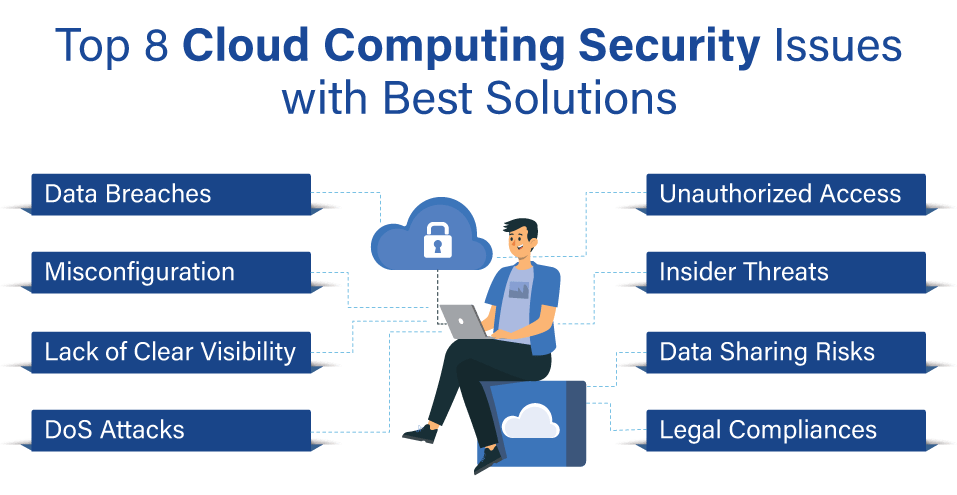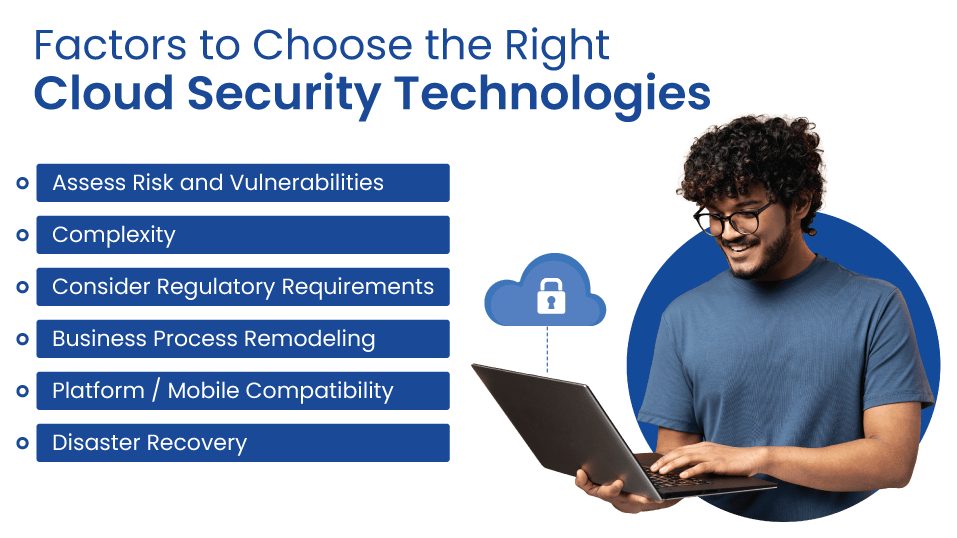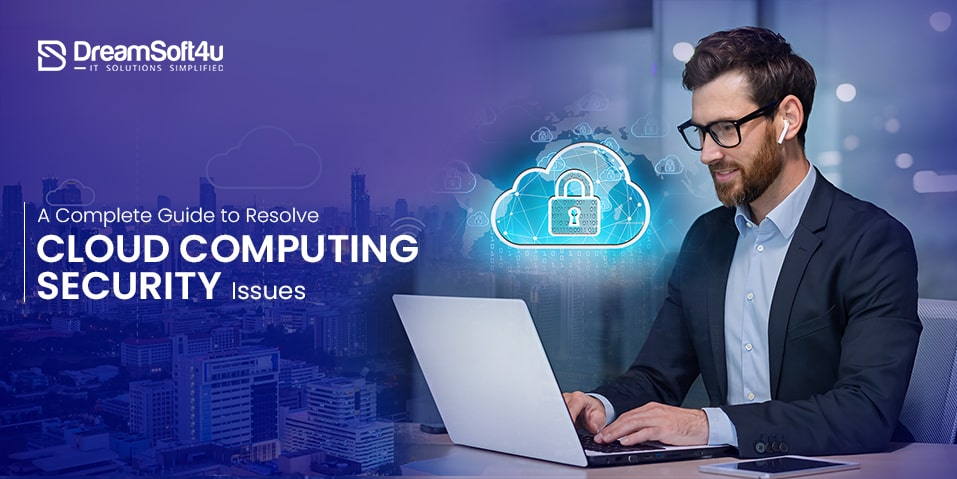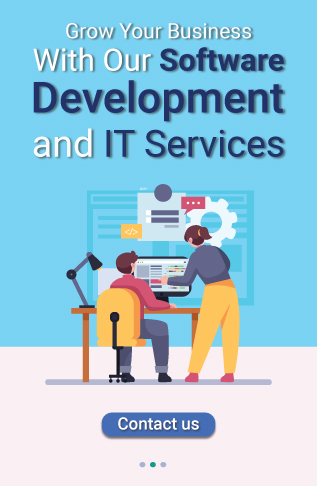Cloud computing has one of the fastest adoption rates globally. Most organizations are using the power of cloud computing to access and manage data efficiently as well as for scalability. Currently, the global market size of cloud computing is $679 billion in 2024, and it is expected to surpass $1 trillion by 2027. It clearly shows how fast the world is adapting to cloud computing technology.
And that increases the chances of cyberattacks and data breaches as well. It is a big concern that every organization is focusing on resolving by improving cloud computing security.
As we’re entering this digital era, it becomes necessary to stay up-to-date with cloud security parameters to keep their sensitive data protected.
That’s why, In this article, we’ve covered everything about cloud security, why it’s essential, and listed some popular cloud security issues and ways to resolve them. By the end of this article, you’ll understand how you can resolve cloud security issues and choose the right and secured cloud technology for your organization.
Table of Contents
ToggleWhat is Cloud Security and Why Is Its Security Important?
It is the layers of protection that are used by organizations to keep their sensitive data protected from unauthorized access, theft, or data breaches. It comes under cybersecurity, where the main focus is on protecting the stored data, apps, and infrastructure in cloud servers.
There are three main types of cloud platforms, and each comes with its uniqueness and benefits for users. Here are three types of cloud platforms:
1. Public: A cloud-computing platform that is open to public users and can be easily accessed and data shared over the internet. For example, use YouTube for easy access and shareability.
2. Private: A cloud-computing platform that a particular organization hosts.
3. Hybrid: It’s a combination of public and private cloud-computing platforms. It helps organizations maintain data and focus on scalability with public cloud and private cloud, giving great control over the resources.
Cloud computing is a modern-day solution for organizations to grow their business, store, remotely access, and manage their data efficiently. Several reasons encourage companies to shift to the cloud, i.e., storage and cloud security. It allows organizations to store data over the internet servers and also saves their infrastructure cost for securing data. It’s a more convenient, cost-effective, secure, and scalable way for an organization’s growth.
Top 8 Cloud Computing Security Issues with Best Solutions

1. Data Breaches
Nowadays, organizations are using cloud platforms to keep their sensitive data stored, and that increases the risk of data breaches. Every hacker has an eye on this sensitive data, and if there’s any chance of such data leaks, then it can badly affect the company’s reputation and cause misuse of the data. In cloud-based environments, the chances of having weak points are higher, which makes it easier for hackers to attack aggressively. That’s why organizations need to enhance their software development security measures to prevent any attacks.
Solution: To protect such sensitive information from cyber attacks, organizations need to invest in data encryption, threat prevention tools, and tokenization that help to build a layer of protection over the cloud storage and ensure to prevention of any cyber threat.
2. Misconfiguration
Misconfiguration is a popular type of cloud computing security issue that occurs when a cloud system is incorrectly configured. This is a security gap that allows hackers to attack, steal sensitive data, get unauthorized access, and misuse that data. Misconfigured means improperly configured resources on the cloud, open ports, and weak security measures that lead to data breaches and unauthorized access.
Solution: To mitigate the misconfigured security issue, organizations need to implement various security policies and high-end security parameters like encryption, authorized access control, and passwords that regularly scan the entire system, identify weak points, and ensure detailed analysis reports to resolve the issue. These initiatives help organizations protect their sensitive data from any cyber-attacks. And ensure there are no weak points for easy attacks.
3. Lack of Clear Visibility
When organizations store their sensitive data on a third-party cloud platform, which is outside their network or surveillance, then it increases the chances of data visibility and weak points for hackers to make cyber attacks. Moreover, many organizations lack security measures in their cloud platform, and that leads to cyber threats and data breaches.
Solution: To resolve the issue of visibility, organizations should focus on implementing security parameters and invest in security tools to easily identify threats and add a strong layer of protection around the sensitive database on the cloud to ensure no weak points for hackers and reduce the chances of cyber attacks. For adding a layer of security parameters, you can consider a software development company where professionals will handle the entire security parameters.
4. DoS Attacks
Nowadays, organizations are storing and accessing their database on cloud-intrasite, and that leads to any type of cyber attack like DoS. DoS (Denial-of-Service) is a type of cyberattack that prevents users from accessing their cloud-based resources and services. Hackers use it to disable or shut down systems, deny access, or disrupt a network.
Solution: To prevent DoS attacks, organizations should add a robust layer of protection around cloud-based resources with distributed denial of service (DDoS). It helps to identify DoS attacks and respond quickly to prevent malicious traffic. Also, following regular security assessments and collaboration can enhance the security of DoS threats.
5. Unauthorized Access
One of the most common cyber attacks that most organizations have had at least one time over the years is unauthorized access. This issue occurs when any hacker steals or accesses sensitive information without any organization’s permission. So, it happens because of a lack of robust security parameters and leads to a big cyberattack, which can destroy a company’s reputation and misuse the data.
Solution: To prevent any unauthorized access, organizations must implement encryption and layers of security that allow only authorized users of the organization to access the data and prevent hackers or any malicious attacks.
6. Insider Threats
Insider threats remain a big concern for every organization. It means an employee who threatens the security of sensitive data intentionally or accidentally and increases the risk of cyber attacks. As the cloud infrastructure becomes essential in every part and requires sharing access with employees for easy accessibility, it’s hard to identify insider threats in the organization that affect the security.
Solution: Every organization should adopt a zero-trust security model that ensures every employee’s activities are monitored closely and employee assessment training to lower the risk of insider breaches.
7. Data Sharing Risks
The reason behind such rapid adoption of cloud computing for organizations is easy data sharing and accessibility. Instead of sending large-size files via pen drive or hard drive, users can now share data in the form of links with easy and quick shareability. Such convenience and easy accessibility also increase the chances of data-sharing risks. Because such links can be easily stolen or accessed by any unauthorized user, that’s why every organization should focus on securing their links from unauthorized access.
Solution: To mitigate the risk of data sharing, organizations need to follow some cloud computing security parameters. First, they need to use controlled access methods where they can share controlled access rather than public link sharing, which is easily accessible to anyone. Then, provide education about the importance of link-sharing and implement access control to authorized users only. Also, it helps to prevent unauthorized access and reduces the risk of cyberattacks.
8. Legal Compliances
There are various standards and security regulations that every organization should follow, like PCI, DSS, and HIPAA. It ensures the data is protected from unauthorized access. However, implementing all the security policies is a challenging task that many organizations accidentally ignore or are not aware of. It opens the door for hackers to identify the weak point and do cyber attacks to steal data or misuse it. That’s why every organization should focus on implementing security parameters to protect sensitive information from any kind of cyber threat.
Solution: To ensure the data is protected and follows regulations, organizations should conduct an assessment of their cloud service provider, its compliance certifications, and security parameters to ensure the platform is trusted and secured. Then, it’s time to implement healthcare software solutions with encryption for data storage and access. Additionally, focus on auditing cloud infrastructure to know the latest compliance status.
Factors to Choose the Right Cloud Security Technologies

The reason behind organizations adopting cloud-environment, i.e., fast efficiency, scalability, and growth. However, there are all types and sizes of businesses in the world, and they need to choose the right cloud computing technology based on their requirements. Here are a few factors to consider and identify which cloud technology is best for your platform:
1. Assess Risk and Vulnerabilities
When it comes to choosing the right cloud computing technologies, the very first thing every organization should consider is assessing the risks and vulnerabilities. You need to identify what’s the biggest risks and vulnerabilities in your organization and what’s badly affecting and causing harm. So, it helps to choose the best-fit cloud platform for your organization that can handle risk and vulnerabilities.
2. Complexity
It’s a recommendation for every organization to avoid shifting to a complex cloud computing system initially, especially small-to-medium scale businesses. A cloud computing platform should be user-friendly and easy to understand. So that your clients and employees in the organization can easily access it rather than getting confused with various technical complexities. Every organization should initially start with a simple cloud platform for better efficiency.
3. Consider Regulatory Requirements
Every organization needs to understand the industry regulations and comply with them. When you’re looking for cloud computing in healthcare, then it should meet the compliance standard and provide the necessary security to handle it. So, first, you need to understand your industry regulations to comply and find a best-fit technology.
4. Business Process Remodeling
When it comes to finding the right public cloud technology, organizations need to understand the customization and the possibilities for that cloud platform. Such as on-screen adjustments, non-source code customization, and pre-designed system logic. Before finalizing the cloud platform, you must check how workflows are created and what kind of system integration and technical services come.
5. Platform / Mobile Compatibility
A cloud platform must be compatible with multiple platforms and mobile devices for easy accessibility. As the usage of mobile devices and web browsers is going to increase, every organization should choose the right cloud platform.
6. Disaster Recovery
One of the major factors that every organization should consider while choosing the right cloud platform is disaster recovery solutions. If there’s any situation that arises where organizations are facing downtime, then how does that cloud platform help to resolve/handle the disaster, what’s the strategy, how does it take backup, and other strategies to handle the downtime.
Looking for an end-to-end cloud solution for your business?
Get in touch with our team of certified developers for a cost-effective solution
How DreamSoft4U Can Help You In Cloud Development?
DreamSoft4U is a leading end-to-end custom cloud security solutions provider that can help your organization switch to a leading cloud platform. We have a team of certified developers who can easily migrate your business to cutting-edge cloud technology. It will maximize your high ROI. So, get in touch with our experts for a free consultation and get a complete cloud solution for your business.
FAQs
Q.1 What are the most common cloud computing security issues?
Some of the cloud computing security issues are data breaches, insecure APIs, insufficient data encryption, unauthorized access, etc.
Q.2 What is a Zero-trust security model?
A zero-trust security model is a popular approach in cybersecurity that denies access to organizations’ resources without having authorized permission.
Q.3 What role does employee training play in cloud security?
Employee training helps organizations to increase their awareness of data security best practices and reduce the risk of cloud computing.
Q.4 What is the biggest threat to security on the cloud?
One of the biggest threats to cloud security is data breaches. Where hackers can steal or misuse organizations’ sensitive information and damage the reputation of the organization.
Wrapping Up!
Overall, cloud computing is the future, and its adoption will continuously grow over time. That’s why every organization should be aware of using the cloud platform and ways to resolve its security issues. We’ve listed the eight most common cloud computing security issues in cloud computing and solutions you can implement to resolve them. Now, it’s your turn to choose the right cloud platform and hire a professional cloud solution provider. Later, you can implement the best possible ways to resolve security issues whenever they arise.























